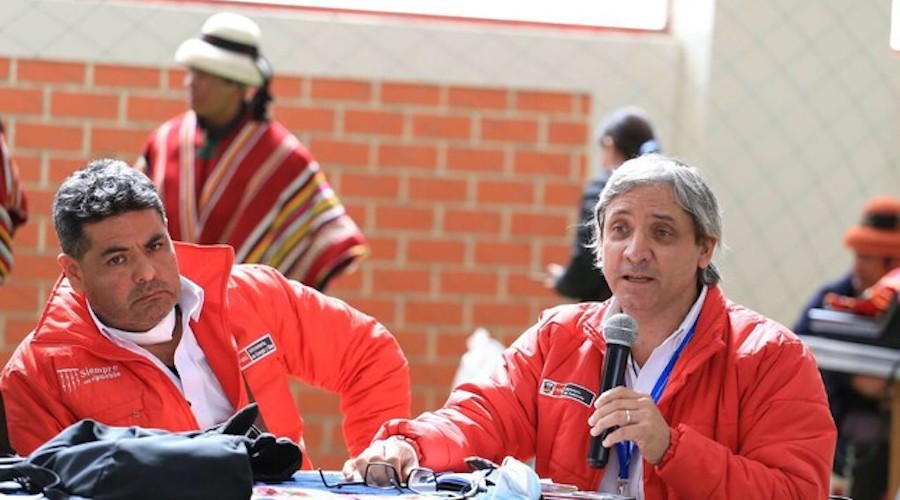Valentina Ruiz Leotaud | July 10, 2022

Carlos Eyzaguirre, director of the General Office of Socio-Environmental Affairs of the Ministry of Environment of Peru. (Image courtesy of the Ministry of Environment).
As the dialogue between Chinese miner MMG Ltd and six Peruvian Indigenous communities has come to a stall and the July 15th deadline to find a solution to a months-long conflict looms, government authorities are making an effort to keep the conversation going by assuring that Las Bambas copper mine goes through regular environmental inspections.

During a public hearing in Huancuire, in the southern-central Apurímac region, the director of the General Office of Socio-Environmental Affairs of the Ministry of Environment, Carlos Eyzaguirre, said that the Agency for Environmental Assessment and Enforcement has so far performed 33 environmental inspections at Las Bambas.
According to Eyzaguirre, such inspections have been done as part of the obligations contemplated in the mine’s environmental impact assessment. The EIA – he said – also stipulates a series of commitments related to the way the mine is supposed to operate in relation to the surrounding communities.
The government official also pointed out that the Ministry of Environment is in charge of coordinating a specific working group whose objective is to foster a dialogue between Las Bambas and the Huancauire community, under the supervision of the Ministry of Energy and Mines and the Presidency of the Ministers’ Council.
The working group also operates under a committee created by ministerial resolution nº 182-2022, which is meant to oversee and evaluate the commitments agreed upon by the executive power, MMG and the communities of Fuerabamba, Chila, Choaquere, Chuicuni, Pumamarca and Huancuire.
The conflict
After a number of protests were carried out for almost two months, forcing MMG to halt operations for more than 50 days, a 30-day truce was called on June 15th by the six communities in conflict with Las Bambas.
The actions were originally launched in mid-April by the communities of Fuerabamba and Huancuire, who say Las Bambas has not honoured all of its commitments to them. Both communities sold land to the company to make way for the mine, which opened in 2016.
The Chila, Choaquere, Chuicuni and Pumamarca communities joined later with similar complaints and all six of them are part of the committee aiming to find a middle ground between people’s demands and what the miner is willing to offer.
Following the truce, copper production at Las Bambas has reached normal levels. However, MMG has said that it is unlikely to meet its production guidance of 300,000-320,000 tonnes of copper concentrates this year if a permanent solution to the conflict is not found.
Peru is the world’s no. 2 copper producer and Las Bambas is one of the world’s largest producers of the red metal, accounting for 1% of the Andean country’s gross domestic product.
No comments:
Post a Comment